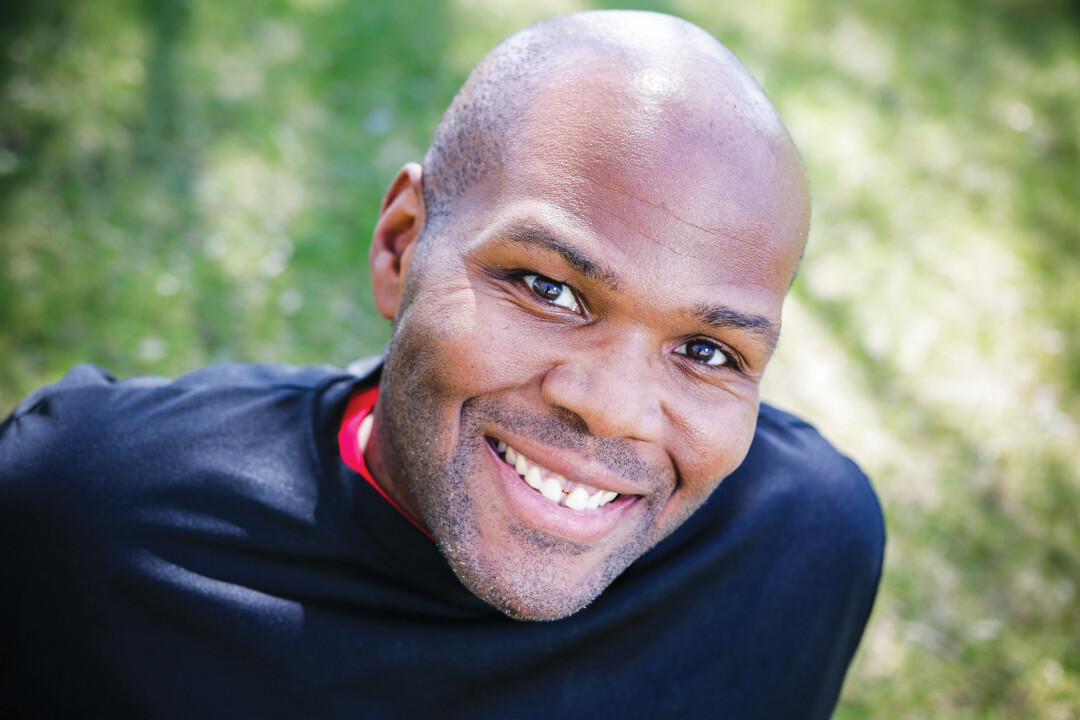Barbecue Basics: Ryan Jean-Baptiste is here to help
Lauren Fisher, photos by Andrea Paulseth

Ryan Jean-Baptiste has been serving up life-saving barbecue in the Chippewa Valley for the past 5 years as the owner of Life Support BBQ – also known as the Hambulance Mobile Food Truck. But his background in brisket goes back farther; he’s been serving up pulled pork for nearly a decade.
“Cooking over a flame is the most basic form of cooking,” Jean-Baptiste said. “Every culture has some kind of barbecue.” He loves to try dishes from every place he travels to and discover the differences between them.
“Barbecue is real personal and specific to the individual,” he said. He prefers to go light on the sauce in favor of the taste of the smoke and meat, while others slather their food in the stuff. Some places think of barbecue as only ribs, or only a whole pig. It all comes down to where you’re from and who you are.
For beginners, he offers up some advice: Give yourself enough time to get it right. Don’t plan a shindig with only two hours to smoke your meat. Know your equipment and your environment; everything from the wood or charcoal you use to the humidity in the air can affect the cooking process.
Volume One got a look inside Jean-Baptiste’s barbecue basics kit. From the most important tool to the perfect wood and the best local jellies for sauces, take a look at what give the Hambulance the power to make your mouth water.
“Nobody’s right or wrong,” he said. “But anyone who’s doing it, try to experience as many kinds of BBQ as you can.”
Ryan's Favorite Ingredients & Tools

Montreal Steak Seasoning
If Ryan is throwing together a steak or burgers, Montreal Steak Seasoning is his go-to-blend.
Wood
"Hickory and cherry are two great woods to give color and flavor to your BBQ," Ryan said. "There's 50,000 different chemicals that occur when you burn wood, and different woods create them in different amounts." These micro-particals, along with salt, are the only thing that actually penetrate into the cut of meat to give that extra flavor.
Hickory is middle-of-the-road when it comes to producing heat, and has a milder flavor that, for example, mesquite. But it's also more pungent than Cherry, which is sweet and fruity.
Ryan uses fruit woods for pork or a sweeter taste, while sticking to hickory or oak for beef briskets.
Salt
What would any form of cooking be without salt?
Ryan uses coarse salt - which has a greater surface area - to pull moisture from the meat and infuse it with flavor. This creates a great crust during the smoking process.
Onion Powder + Garlic Powder
Basics for any novice BBQ chef.
Jelly
Ryan creates a vinegar-based sauce with butter and spices for his BBQ, topping it off with an appropriate jelly for the protein.
For a whole-hot roast, it's apple jelly; for chicken, he'll go with currants. These are Avenue Orchard jellies from Osseo, Wisconsin. Ryan chooses local ingredients whenever he can, but is always looking for new flavors to incorporate into his dishes.
Knife
"Whether a knife is a good one or not is really up to the person using the knife," Ryan said. "The biggest reason why I used this one is because the handle feels good in my hand."
A good knife, he says, is key for anyone who is going to be preparing a lot of meat - for trimming fat and gristle with ease. His weapon of choice is a Shun chef's knife.

